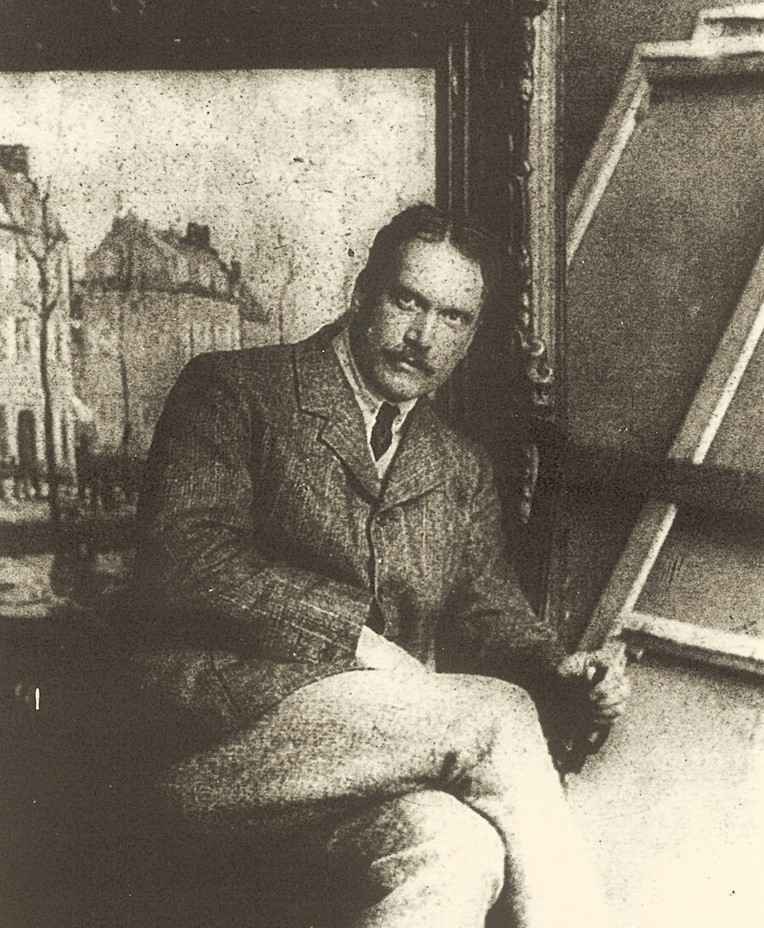Walter Elmer Schofield (1866 - 1944) Works

Walter Elmer Schofield (1867 – 1944)
Many early twentieth century art critics counted Walter Schofield among the most daring innovators among American Impressionist landscape painters. Schofield was quoted in International Studio magazine in February 1913, saying “Zero weather, rain, falling snow and wind; all these things to contend with only make the open-air painter love the fight”.
Walter Elmer Schofield was born in Philadelphia on September 10, 1867, the son of a prosperous businessman. He attended classes at the Pennsylvania Academy of the Fine Arts from 1889 to 1892, under Thomas Anshutz. While at the Academy, he frequented the Tuesday night open houses Robert Henri held at his studio, where close friendships developed with Henri, Edward Redfield, William Glackens, and John Sloan, among others. Schofield left Philadelphia in 1892 to enroll at the Académie Julian in Paris, where he studied under William Bouguereau, Gabriel Ferrier, and Henri Lucian Doucet.
Schofield married Murielle Redmayne, an English girl, in 1896. In 1901, the couple moved to St. Ives in Cornwall, England. Although Schofield established his residence in England, he made annual trips to the United States, where he usually resided from October through April. In the U.S., he spent his time painting Pennsylvania snow scenes, when not attending to obligations at art galleries and institutions.
The majority of Schofield’s work depicts the coastal fishing villages of Cornwall and Devon, their rolling hillsides, rocky coasts, and clusters of cottages. His stately manor house in Cornwall, called “Godolphin”, with its rich grounds, lily pond, and formal gardens, also provided Schofield with idyllic scenery to paint. Often compared to his contemporary, Edward Redfield, a friendly rivalry developed between the two artists and Schofield became a frequent visitor at Redfield’s home in Bucks County for a period of time. Schofield, possibly influenced by Redfield, began painting large canvases outside with bold, rapid brushstrokes. Tragically, by 1904, animosity developed between the two artists and their friendship cooled.
During his lifetime, Schofield garnered many awards, medals, and prizes. His exhibition record includes the Pennsylvania Academy of the Fine Arts (1903 Gold Medal and 1914 Gold Medal); the Paris Salon; the Philadelphia Art Club (1898 prize); the Society of American Artists (1900 prize); the Paris Exhibition (1900 prize); the National Academy of Design (1901 prize, 1911 Gold Medal, and 1920 prize); the Pan-American Exposition in Buffalo; the Carnegie Institute (1904 Medal); the St. Louis Exposition (1904 Medal); the Corcoran Gallery Biennials (1926 Silver Medal); the Art Institute of Chicago (1921 prize); the National Arts Club (1913 Gold Medal and prize); the Panama-Pacific Exposition in San Francisco (1915 Silver Medal); and the Sesquicentennial Exposition in Philadelphia (1926 Medal).
His work is in the permanent collections of the Metropolitan Museum of Art, the Woodmere Art Museum, the James A. Michener Art Museum, the Corcoran Gallery of Art; the Cincinnati Art Museum; the Carnegie Institute; the Albright Art Gallery in Buffalo, New York; the Pennsylvania Academy of the Fine Arts; the Art Institute of Chicago; the Luxembourg Museum in Paris; and the National Museum of American Art at the Smithsonian Institute, among others.
Sources:
- New Hope for American Art by James Alterman
- International Studio magazine, February, 1913
- Arts and Decoration, October 1911
- New York Times, March 3, 1944

